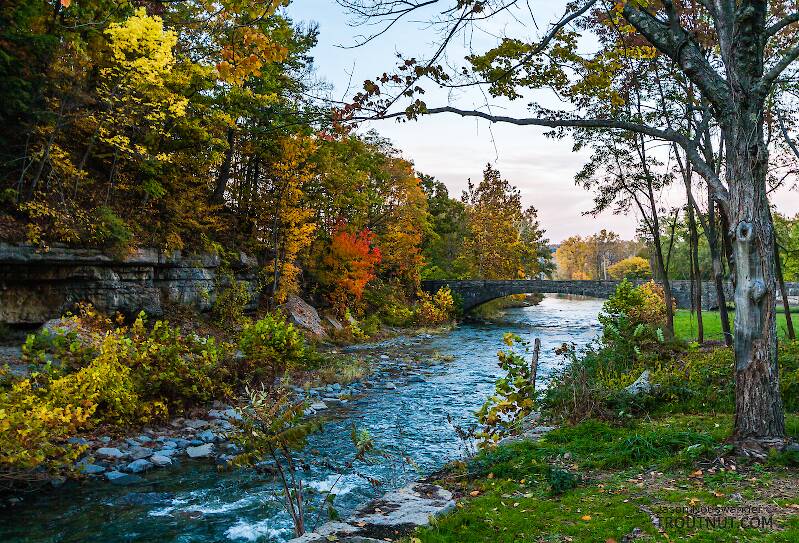
Blue-winged Olives
Baetis
Tiny Baetis mayflies are perhaps the most commonly encountered and imitated by anglers on all American trout streams due to their great abundance, widespread distribution, and trout-friendly emergence habits.

Female Baetis bicaudatus (BWO) Mayfly Nymph Pictures
I collected this one along with a male that was quite a bit smaller but equally ready to emerge in mid April.
I spent quite a while on the identifications, because they really don't look very much like the Baetis bicaudatus nymph I caught last year in Idaho. However, the presence of hind wing pads rules out Acentrella turbida and Iswaeon anoka, the lack of a fringe of long setae on the tibiae rules out Acentrella insignificans, range rules out Heterocloeon, and the thumb-like projection on the labial palp points to Baetis. Thus, Baetis bicaudatus is a fairly confident ID, and it's not too surprising that it looked different from my previous specimen because bicaudatus is thought to be a species complex with multiple types that haven't been fully sorted out yet.
The microscope pictures for this specimen aren't from the same exact nymph, but a mixture of a few others of the same kind that I didn't mind dissecting.
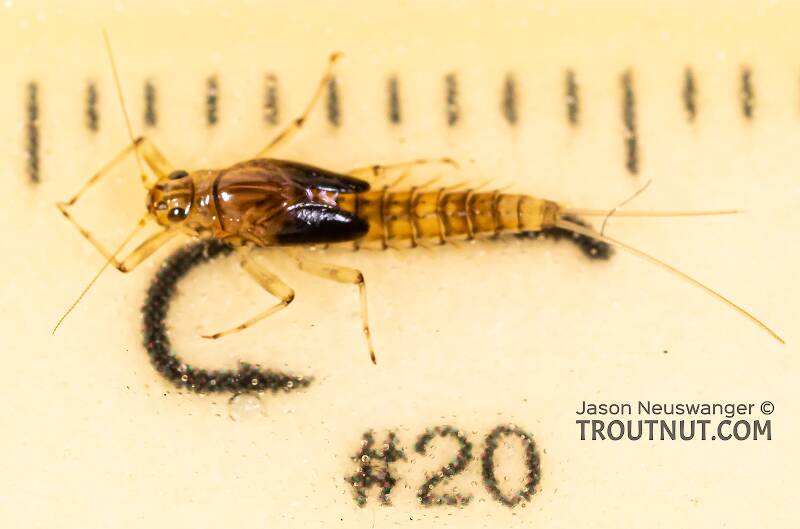
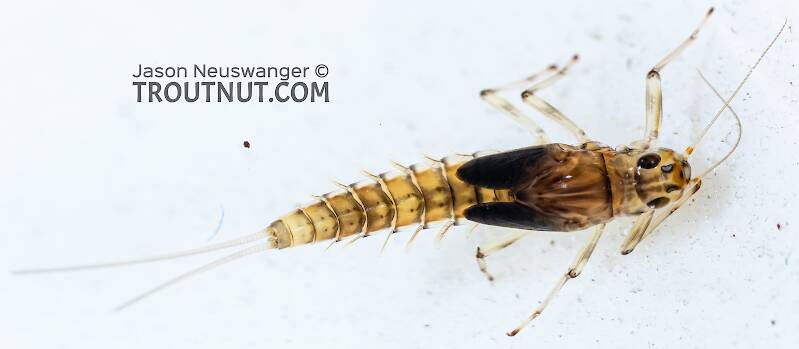
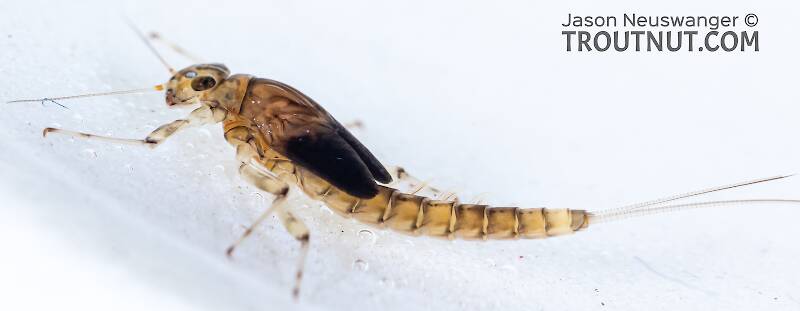
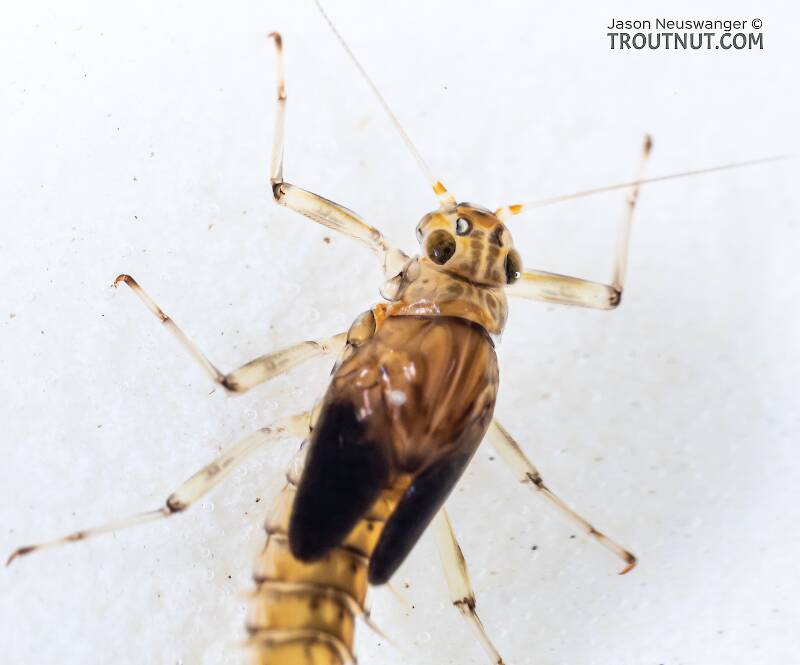
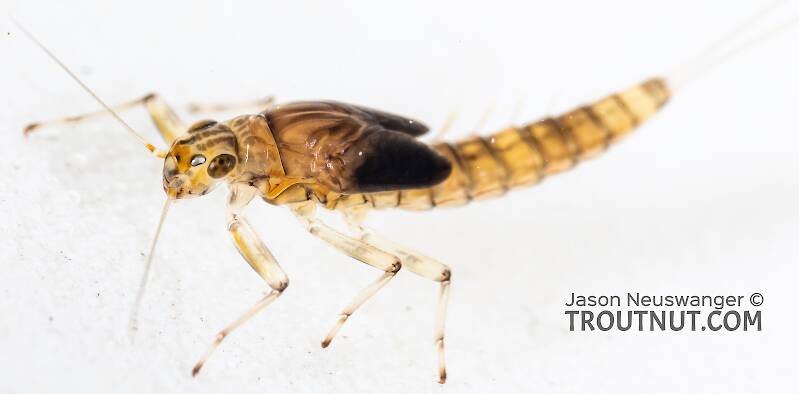
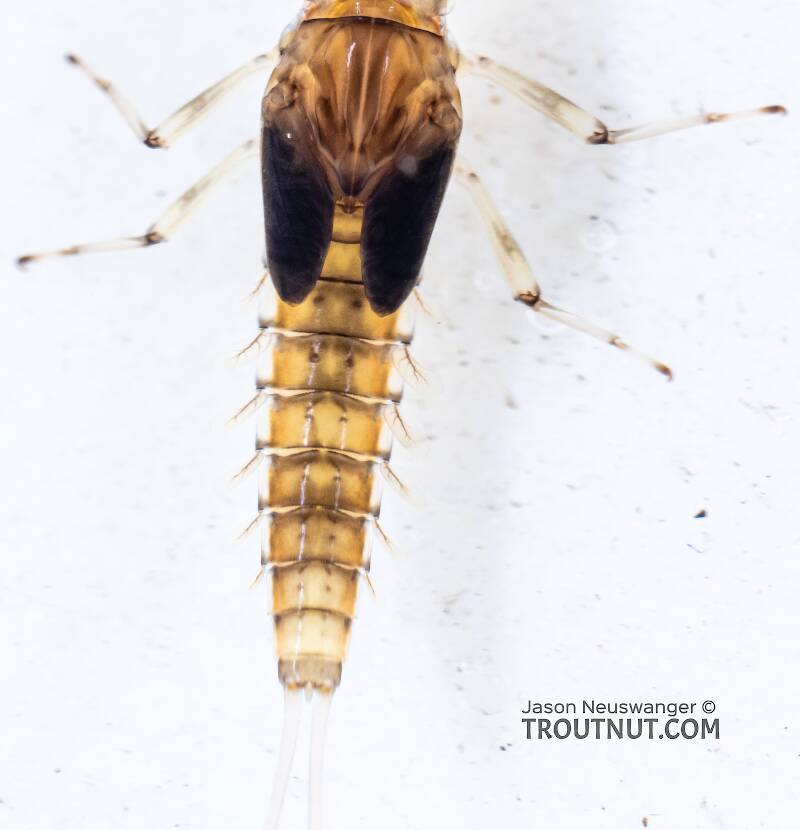
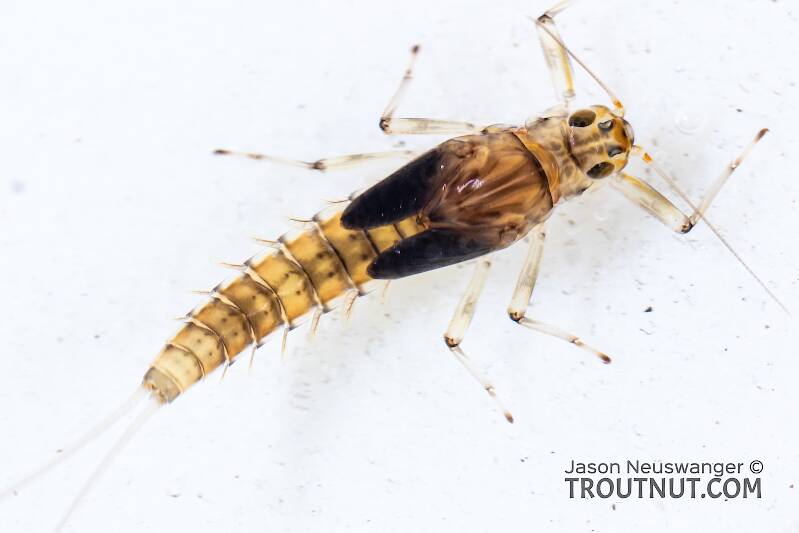
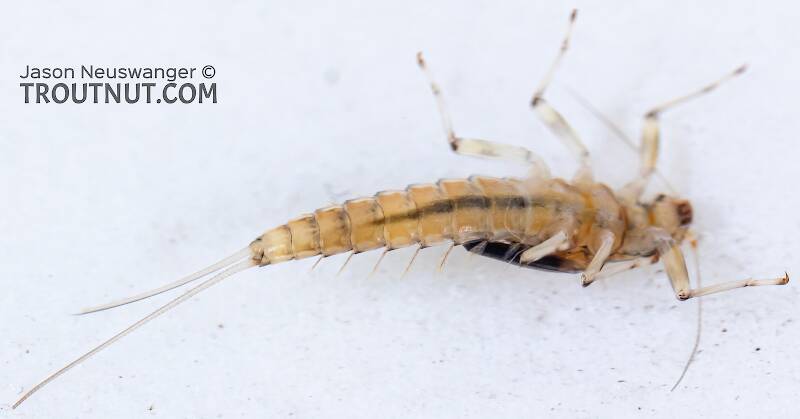
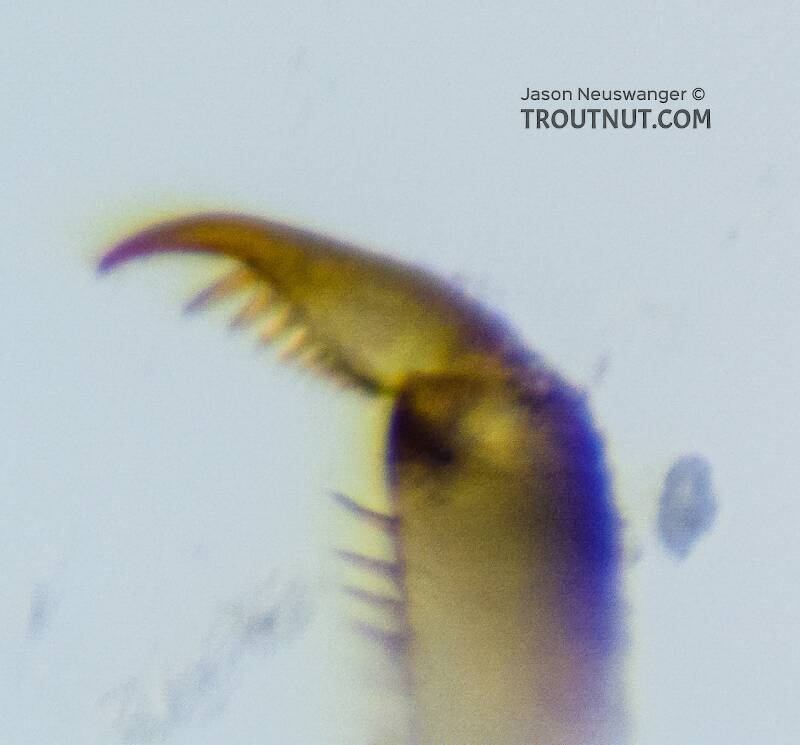
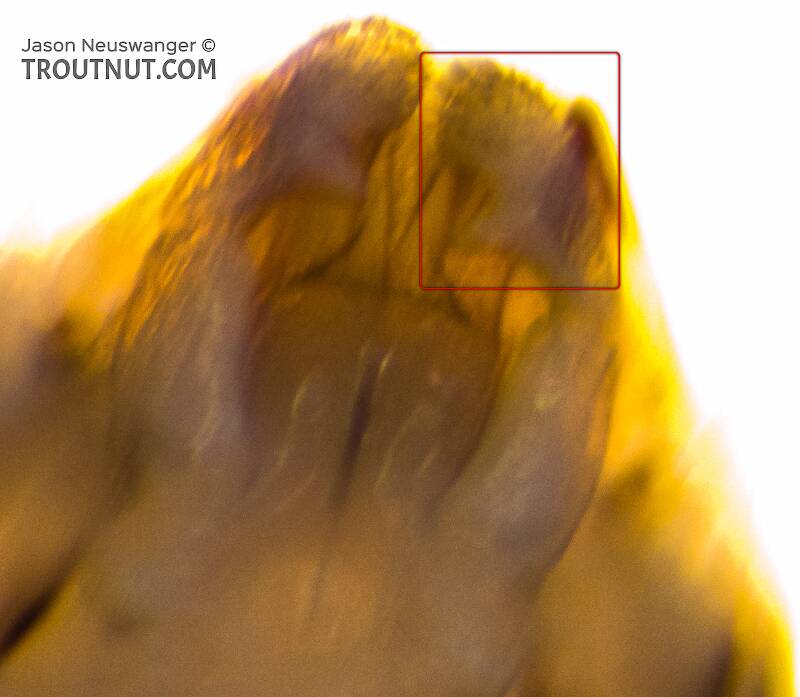
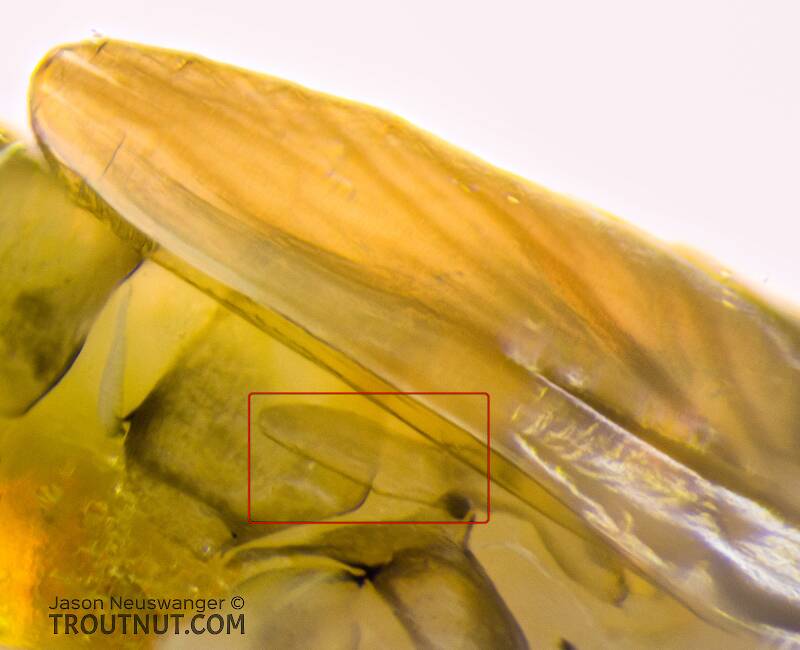
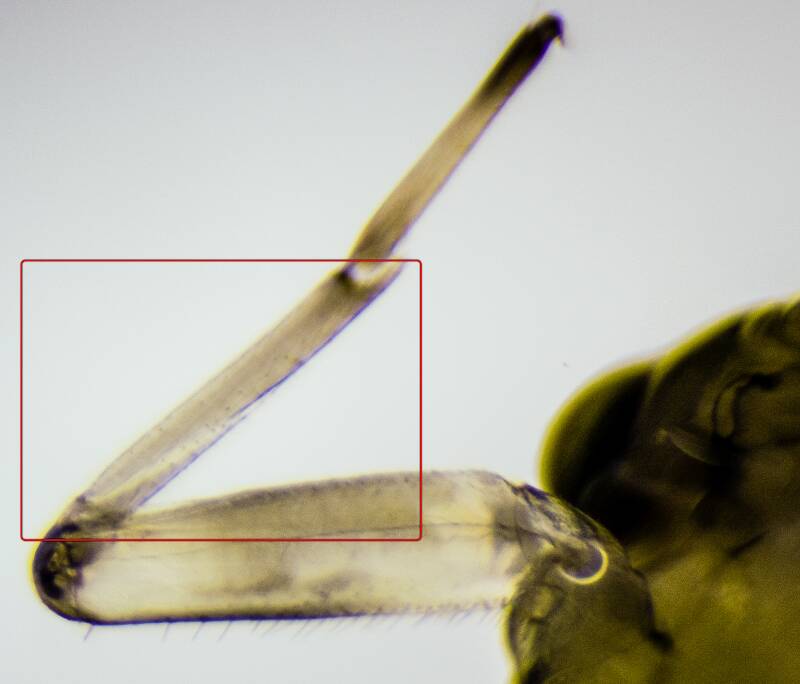
This mayfly was collected from Holder Creek in Washington on April 12th, 2021 and added to Troutnut.com by Troutnut on April 13th, 2021.
Start a Discussion of Nymph
Female Baetis bicaudatus (BWO) Mayfly Nymph Pictures
Collection details
Date: April 12th, 2021
Added to site: April 13th, 2021
Author: Troutnut

